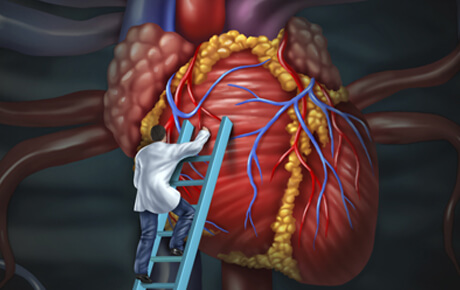

Risk factors for coronary artery disease (CAD) are mostly lifestyle related. Controlling these risk factors is the key to preventing illness and death from CAD.
Some patients with coronary artery disease (CAD) have no symptoms, while others experience a variety of symptoms, including:
If CAD cuts off the supply of oxygen-rich blood to the heart, the result is a heart attack and the heart muscle starts to die. If any of these symptoms occur or if you have a heart attack, your doctor will order one or more of these tests to confirm the diagnosis:
At Anderson Regional Heart Center, interventional cardiologists use both the femoral artery in the groin and the radial artery in the wrist to perform cardiac catheterization.
Doctors at Anderson Regional Heart Center can choose from a variety of treatments for coronary artery disease, depending on your age, overall health and the extent of the disease. Treatments include:
Lifestyle Modifications
Quitting smoking, losing weight and exercising can all help you reduce your blood pressure, cholesterol and glucose levels, thus lessening your risk of coronary artery disease. Controlling diabetes and treating sleep apnea is also important in reducing the risk of CAD.
Medications
Doctors can treat the side effects of coronary artery disease (CAD) with
Coronary Angioplasty
If lifestyle modifications and medication do not alleviate your symptoms, you may need a diagnostic heart catheterization to determine the severity of the blockages. If intervention is needed, an interventional cardiologist will perform a percutaneous transluminal coronary angioplasty (PTCA) to create a bigger opening in the blood vessel to increase blood flow into the heart. PTCA procedures include:
Coronary Artery Bypass Graft (CABG)
If blockages cannot be cleared in the heart catheterization lab because of their location or the number of blood vessels involved, bypass surgery may be recommended. During bypass surgery, the surgeon grafts a piece of a vein above and below the blocked area of a coronary artery, enabling blood to flow around the obstruction. Veins are usually taken from the leg, but arteries from the chest or arm may also be used to create a bypass graft.
Prior to your procedure, you’ll meet the care staff assisting with your catheterization as they:
You may spend 2-4 hours in the recovery area. During this time:
©2024 Copyright | Website Privacy Policy | Digital Marketing by Authority Solutions®